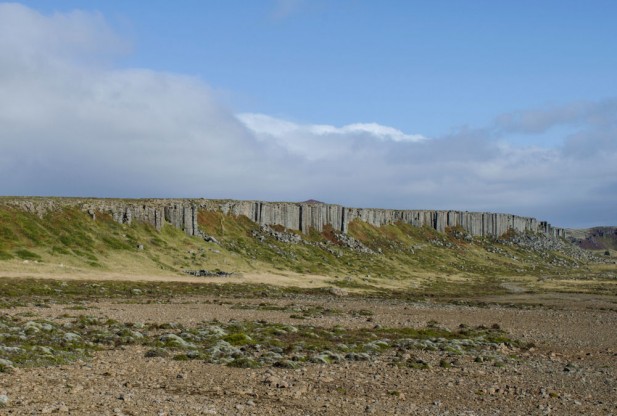
© Thinkstock
Icelandic trolls are not responsible for shaping the basalt pillars found on the island, according to a study recently published in the
Journal of Volcanology and Geothermal Research.
Folklore says that mysterious basalt pillars found in Iceland were created by a pair of angry trolls who hurled rocks at one another. However, the new study says that these pillars actually formed around vertical columns of steam and hot water venting through lava.
The pillars are about eight feet tall and five feet wide and are scattered around the Skaelingar Valley. This valley features a tributary that flows into the Skafta River near Iceland's southern coast. Several of the roughly 40 pillars have broken open, which has allowed cross-sectional views of the walls and central conduits.
Tracy Gregg, a vulcanologist at the University at Buffalo, says the pillars are reminiscent of underwater lava pillars. They also mirror lava trees that can be found around Hawaii, which are basalt cylinders that formed when lava flowed through a forest.
"But we know that that's not what [the pillars] are in Iceland because when this lava flow erupted, there were no trees in Iceland," Gregg, who studied the pillars along with graduate student Kenneth Christle, said in the magazine.
When the Skafta River Gorge blocked up during the Laki eruption back in 1783, the lava that flowed from nearby fissures began to back up into smaller tributary valleys. As molten rock pushed itself up the valley, the ground surface began to heat up, causing steam and hot water to rise through wall gaps between lobes to form geysers. The lava around these geysers kept pouring past, cooling, solidifying and thickening. When the blockage in the main gorge broke, a small portion of lava flowed back down the valley and left the hardened pillars behind.
According to the study, the whole pillar process occurred over just a few hours to days. However, it took the right mix of conditions for them to form, because if the lava had moved too quickly then steam wouldn't have been able to escape through it.
The researchers also pointed out that the pillars being preserved shows that the lava-water interactions were non-explosive.
"Normally, when we think of lava coming in contact with water, we think of that water flashing to steam and causing an explosion," Gregg says. "Here's an example where ... you could've stood right there and watched it."
This study could cause some disappointment among a few Icelandic natives. A 2007 survey found that 62 percent of its 1,000 Icelandic respondents believe that it was possible that elves exist.
In December, the
Associated Press reported that this strong belief in elves is actually causing problems for a new highway project.
Elf advocates are using the power of their voice to urge the Icelandic Road and Coastal Commission to abandon a project to build a direct route through an "elf habitat." The elf activists say that this roadway could not only destroy the habitat, but also could destroy what they say is an "elf church." The opposition has been so strong that it caused the project to stop, pending the Supreme Court of Iceland to rule on the case.

Reader Comments
to our Newsletter